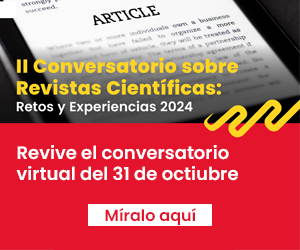Awareness of Rabies Prevention Triad Among Residents of Metropolitan Lima
DOI:
https://doi.org/10.20453/stv.v11i2.4556Keywords:
rabies, awareness, prevention triad, Metropolitan LimaAbstract
The objective of this study was to describe the knowledge levels regarding the prevention triad for rabies transmitted by dog bites among residents of Metropolitan Lima. Data were collected from the National Survey of Budget Programs 2020. The classifying variables included district groupings (Lima Norte, Lima Centro, Lima Este, Lima Sur, and Callao) and the socioeconomic stratum of the population (A, B, C, D, and E). The study variables focused on the proportion of residents who were aware of the components of the prevention triad for rabies (washing the wound with soap and water, identifying the biting animal, and seeking medical care). The study found that only 7.2% of respondents were aware of all three components of the prevention triad for rabies. The best-known component was seeking medical care (90.2%), followed by washing the wound with soap and water (49.7%), and identifying the biting animal (26.4%). It was also found that lower socioeconomic strata were associated with lower knowledge of the prevention triad for rabies. The study results emphasize the need to reassess the strategies used to raise awareness among the population of Metropolitan Lima regarding the public health significance of seeking care for dog bites and regarding the prevention triad for rabies.Downloads
References
Aiyedun, J. O., Oludairo, O. O., & Olorunshola, I. D. (2017). Roles of wildlife in epidemiology of rabies: A mini-review. / J. Adv. Vet. Anim. Res., 4(2); 117-124.
Alegre Carpio, R. O., & Ramal Pajuelo, M. G. (2021). Conocimientos y prácticas sobre la rabia en pacientes atendidos en el Centro de Salud Control de Zoonosis Lima 2019. Tesis de Médico Cirujano. Lima: Universidad de San Martín de Porres. 23 p.
Arroyo, V., Julca, G., Morales, D., & León, D. (2015). Accidentes por mordedura de canes en estudiantes de instituciones educativas de la ciudad de Huaraz, Ancash, Perú. Salud y Tecnología Veterinaria, 3(1), 1-9.
Ballesteros Cadena A. (2016). Impacto en salud pública de accidentes por mordeduras de perros y gatos. Tesis de grado de Título Profesional de Médico Veterinario. Bogotá: Universidad de Ciencias Aplicadas y Ambientales. 76 p.
Batista, H., Franco, A. C., & Roehe, P. M. (2007). Raiva: uma breve revisão. Acta Scientiae Veterinariae, 35(2), 125-144. jurídico de canes. Lima. Congreso de la República. Ley N° 27596. 3 p.
El Peruano. (2016). Ley de protección y bienestar animal. Lima: Congreso de la República. Ley N° 30407. 6 p.
Fortes, F. S., Wouk, A. F. , Biondo, A. W., & Barros, C. C. (2007). Acidentes por mordeduras de cães e gatos no município de Pinhais, Brasil de 2002 a 2005. Archives of veterinary science, 12(2): 19-24.
Ghost T. (2002). Rabies vaccine. En: Shendurnikar N, Agrawal M, editores. Inmunization in children. 2da ed. Hyderabad: Paras Publishing. p 171-182.
[INEI] Instituto Nacional de Estadística e Informática. (2014). Una mirada a Lima Metropolitana. [Internet]. Disponible en: https://www.inei.gob.pe/media/MenuRecursivo/publicaciones_digitales/Est/Lib1168/libro.pdf
[INEI] Instituto Nacional de Estadística e Informática. (2020). Planos estratificados de Lima Metropolitana a nivel de manzanas 2020. [Internet]. Disponible en: https://www.inei.gob.pe/media/MenuRecursivo/publicaciones_digitales/Est/Lib1744/libro.pdf
León, D., Amarista, M., & Falcón, N. (2022). Conocimiento de la población peruana acerca de las acciones que componen la triada preventiva de la rabia transmitida por mordedura de canes domésticos. Revista de Investigaciones Veterinarias del Perú, 33(3).
Marín Álvarez, L. M., Ruíz Sáenz, J., & Ruíz Buitrago, J. D. (2014). Análisis del programa de prevención y control de rabia de origen silvestre y su papel en el número de focos bovinos en el periodo 2001-2011. CES Medicina Veterinaria y Zootecnia, 9(2), 203-217.
[MINSA] Ministerio de Salud. (2017). Norma técnica de salud para la prevención y control de rabia humana en el Perú. Lima: Ministerio de Salud. 100 p.
Morgan, M., & Palmer, J. (2007). Dog bites. Bmj, 334(7590), 413-417.
Novoa, D., León, D., & Falcón, N. (2017). Accidentes por mordedura de perro en escolares de instituciones educativas públicas y privadas de San Martín de Porras, Lima-Perú. Lima: Salud Tecnol Vet, 5; 1-7.
Sparkes, J., Fleming, P. J. S., Ballard, G., Scott‐Orr, H., Durr, S., & Ward, M. P. (2015). Canine Rabies in A ustralia: A Review of Preparedness and Research Needs. Zoonoses and public health, 62(4), 237-253.
Talavera, M., Gamboa, B., Gonzáles, J., Huanambal, C., León, D., & Falcón, N. (2018). Accidentes por mordedura de canes y conocimiento de rabia urbana en pobladores de Madre de Dios y Puno, Perú, 2014. Revista de Investigaciones Veterinarias del Perú, 29(3), 1025-1035.
Tordo, N., Bahloul, C., Jacob, Y., Jallet, C., Perrin, P., & Badrane, H. (2006). Rabies: epidemiological tendencies and control tools. Dev Biol (Basel), 125, 3-13.
Warrell, M. J., & Warrell, D. A. (2004). Rabies and other lyssavirus diseases. The Lancet, 363(9413), 959-969.
[WHO] World Health Organization. (2013). WHO Expert consultation on Rabies: Second report. Ginebra: World Health Organization. Reporte tecnico N° 982. 139 p.
Downloads
Published
How to Cite
Issue
Section
License
All articles published in Salud y Tecnología Veterinaria are under a Creative Commons Reconocimiento 4.0 International license.
The authors retain the copyright and grant the journal the right of first publication, with the work registered with the Creative Commons License, which allows third parties to use what is published whenever they mention the authorship of the work, and to the first publication in this magazine.
Authors can make other independent and additional contractual agreements for the non-exclusive distribution of the version published in this journal, provided they clearly indicate that the work was published in this journal.
The authors can file in the repository of their institution:
The research work or thesis of degree from which the published article derives.
The pre-print version: the version prior to peer review.
The Post-print version: final version after peer review.
The definitive version or final version created by the publisher for publication.












